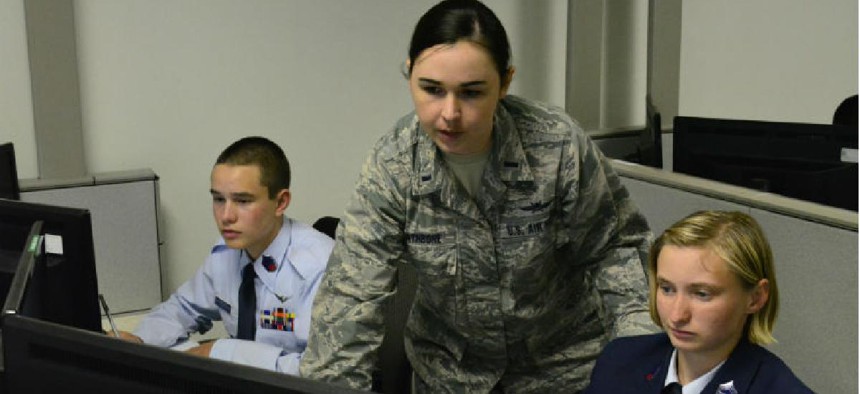Can contracting for IT services help bolster the cyber ranks?

The Air Force's CIO wants to bet his budget on enterprise IT to improve cyber warfare capabilities.

The Air Force is moving forward with plans to make IT as a service a reality -- and to free up more service members for cyber warfare capabilities.
Lt. Gen. Bradford Shwedo, the Air Force's CIO and information dominance head, said he planned on spending much of his fiscal 2019 budget on enterprise IT to tend to "neglected networks."
"Our networks in the past have been neglected" due to budget constraints, Shwedo said during a Feb. 15 Armed Forces Communications and Electronics Association event in Arlington, Va.
"Also, we're seeing more and more bad guys using cyber as an asymmetrical attack access," he said. "So how do I get more guns to the fight? Enterprise IT as a service."
Shwedo said switching to as-a-service solutions is about more than saving money. It's about repurposing the military workforce to do what contractors can't: fight.
"I need to use blue suiters where blue suiters are suited for," he said. "I can get contractors to do enterprise IT, I can't get contractors to attack or exploit," per the laws of armed conflict.
Shwedo said that switching to "as a service" would also allow the Air Force to better focus its training for IT personnel, because "the skills associated with running enterprise IT as a service and getting in a cyber dogfight are too different."
The Air Force is slated to get $194 billion, or 28 percent of the proposed defense budget for fiscal year 2019.
But the Air Force also plans on putting finalized budget towards investing in weaponizing data capabilities.
Air Force deputy chief of staff for intelligence, surveillance and reconnaissance, Lt. Gen. VeraLinn Jamieson, said during the AFCEA event that her main goal for fiscal 2019 was to put publicly available information on intelligence systems and make those systems automatic so they can better inform soldiers in the information age.
Security across digital domains continues to be a challenge, she added.
"I can see things only in one secure domain," Jamieson said. "And we don't want to have switch boxes on every airman's desk to have to manually go through a different domain to mentally fuse" information together.
Jamieson also emphasized the need for automation on the battlefield, saying she wanted to continue funding programs to automate high-definition, full-motion video cameras on drones used in Afghanistan to help track targets' movements and allow airmen to determine their locations.
"We're going to repurpose our airmen so that they have time and space to really address … the intent of our adversary," she said.
"Our airmen are conditioning the data, we're structuring our data," Jamieson said. "The reason can't just go to an automated system is because we have our data that is not structured in means that can be used. So we actually throw away 97 percent of that absolutely every day, because you can't do anything with the data."






